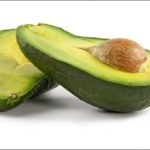Coconut oil is a liquid solution extracted from fresh or dried coconuts.
Pure coconut oil has good health benefits and is highly valued in women’s beauty. In addition, coconut oil is widely used in cuisine and is considered one of the many miracle ingredients for skin beauty.
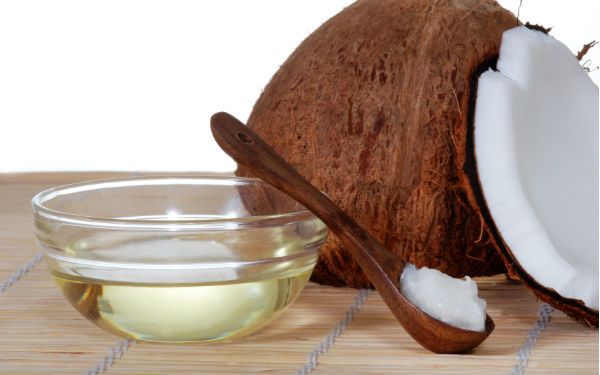
2. Differentiate between cold-pressed and hot-pressed coconut oil
Hot-pressed coconut oil uses the method of heat to separate water from oil. Hot-pressed coconut oil has a slightly stronger and more intense aroma.
However, this method can only produce a small quantity and the extracted coconut oil still contains impurities, so the storage time is short.
Cold-pressed coconut oil uses the method of cold air to separate water from oil. Cold-pressed coconut oil is white in color and has a gentle and light fragrance.
This method can be produced in large quantity, the extracted coconut oil is pure and can be stored for a long time with high nutritional value.

3. How to make coconut oil at home
How to make coconut oil using a rice cooker
Ingredients and tools needed
- 500g of grated dried coconut
- 500ml of boiling water
- Sieve or cheesecloth
- Spoon/fork for stirring
- Glass jar for storing the finished coconut oil
Step 1: Soak the grated coconut in 500ml of boiling water for about 15-30 minutes to soak the water into the coconut.
Step 2: After soaking, strain and squeeze the grated coconut thoroughly to extract as much coconut milk as possible, strain through a sieve, and prepare for cooking.

Step 3: Pour the extracted coconut milk into the rice cooker, press the “cook” button on the rice cooker and boil this coconut milk.
Step 4: After 40 minutes, the coconut milk will become thick and start to separate into oil. Cover the rice cooker to prevent oil from splattering and continue cooking for about 20 minutes.
When the coconut solids become thick and settle at the bottom of the rice cooker, with a brownish tint, and the oil has a faint and pleasant smell, you can turn off the rice cooker.
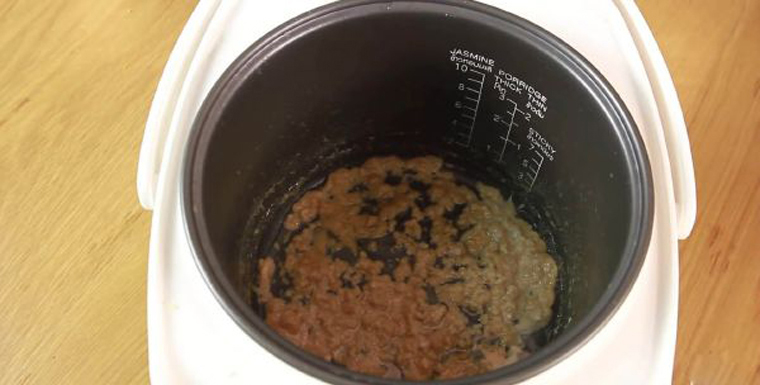
Step 5: Proceed to separate and transfer the coconut oil into a clean glass jar.
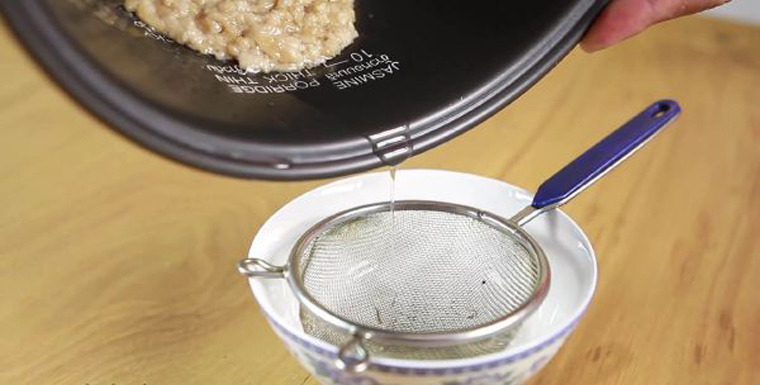
How to make coconut oil using a pan
Ingredients and tools needed
- 4-8 mature coconuts
- Utensil or cloth
Note: Depending on the amount of coconut oil you want to make, you can buy more or fewer coconuts. You should choose mature and firm coconuts. Alternatively, you can go to a store or prepare your own grated coconuts at home.
Step 1: Extract the coconut milk from the grated coconut using a cloth or fine sieve.
When extracting, twist the cloth tightly to extract all the coconut milk. To avoid impurities, strain the coconut milk through a small sieve before cooking.
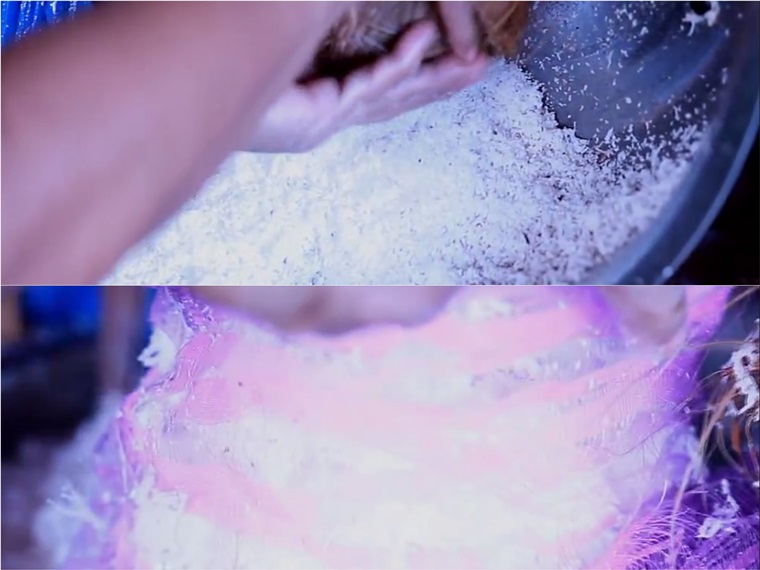
Step 2: Place a pan on the stove, choose a pan with a flat bottom for even heat distribution, and preheat the pan faster. Pour the coconut milk into the pan and heat it over medium heat, stirring frequently.
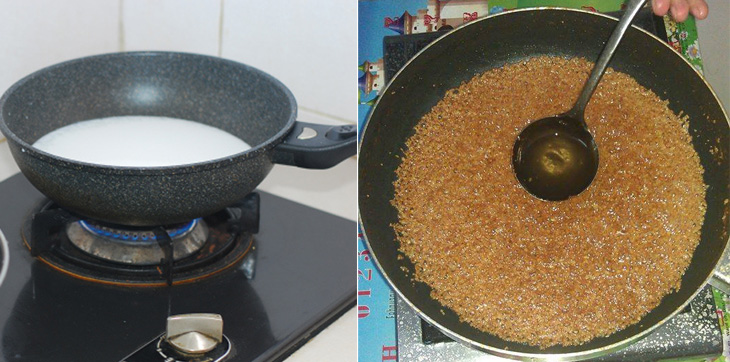
Step 3: Pour the coconut oil from the pan into a strainer to separate the oil from the residue.
Step 4: Pour the coconut oil into a glass jar and use it. Alternatively, you can store this mixture in the refrigerator of your home for a period of time until the coconut oil solidifies, making it easier to scoop out with a spoon for future use.
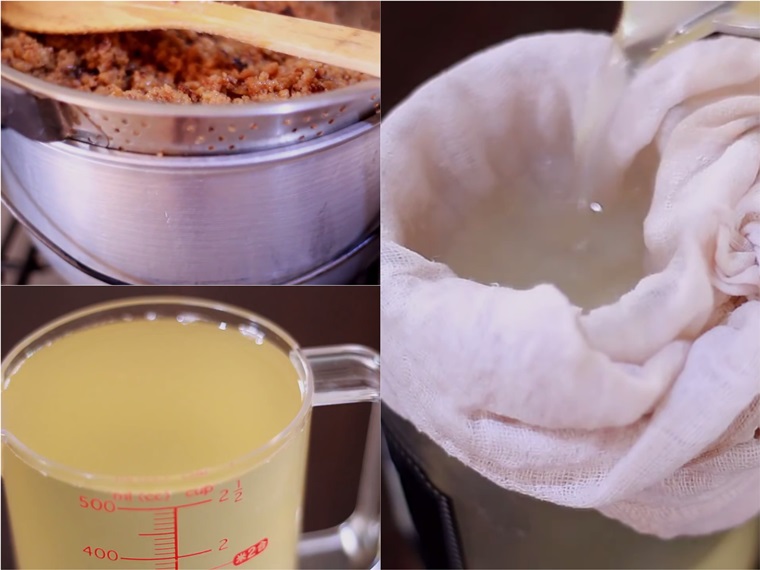
How to make coconut oil using an oil extractor
Ingredients and tools needed
- 1 mature coconut (the older, the better)
- 1 can of clean water (can be hot or cold)
- Oil extractor
Step 1: Preparing the coconut
Remove the husk from the coconut, cut it into small pieces, and place it in a microwave oven to dry (for 4-6-8 hours depending on the thickness of the coconut and whether the coconut has dried or not).
The purpose of drying is to increase the concentration of coconut oil for subsequent processing steps.
Note: You can also skip this step and instead cut the coconut into small pieces and blend it until smooth, then proceed to extract the coconut milk using the hot pressing method.
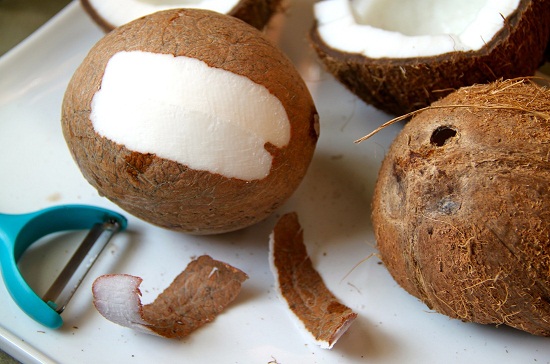
Step 2: Place the dried coconut in the oil extractor to extract the coconut oil (squeeze tightly and repeat the process to extract all the coconut oil – saving cost and preventing wastage).

Step 3: After squeezing, leave it in a glass jar at room temperature for 1 day and 1 night so that the coconut milk settles at the bottom of the jar and the pure coconut oil will be lighter and float on top.
Step 4: Use a spoon to scoop out the coconut oil and put it into a clean glass jar for use. Additionally, you can leave this mixture in the fridge to settle further, making it easier to measure out the coconut oil when needed.
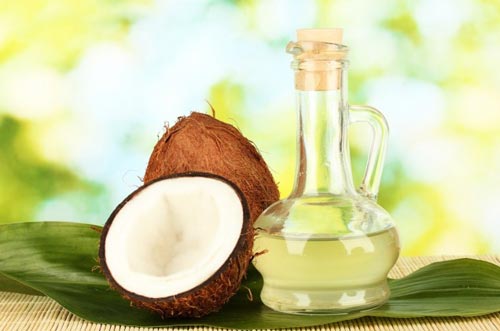
4. Some tips for storing coconut oil
- Store coconut oil in a jar or glass jar with a wide mouth for easy access.
- Coconut oil needs to be stored in the refrigerator. Do not place the coconut oil in the door compartment. The recommended storage temperature is from 1 to 8 degrees Celsius.
- Alternatively, you can store coconut oil at room temperature, but the shelf life will be shorter. Just keep the coconut oil in the kitchen for convenience and avoid heat and flames.
- When using coconut oil, if any spills occur, you need to use a clean cloth to wipe away the spilled coconut oil to prevent the spilled oil from oxidizing and sticking to the remaining coconut oil when used in subsequent times.
Above are simple methods that you can do at home to make inexpensive and safe coconut oil for your family.

























